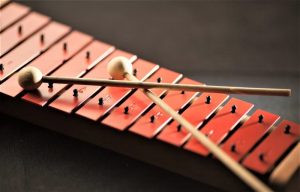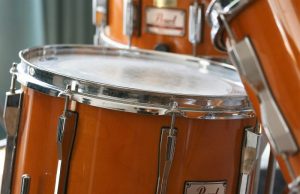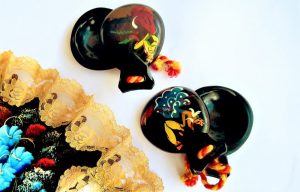Xylophone
The xylophone is a musical instrument that belongs to percussion instruments which sound is generated when it is played by hitting it with two drumsticks is able to make musical notes and sounds. In percussion family, this instrument belongs to plates group because it is built by a series of wooden plates that can produce different notes. Sound duration of its notes is usually shorter because the wooden plates have the ability to vibrate less than the metal ones. This instrument is usually used in schools and according to its size we can find three types of xylophones: the soprano, the alto and the bass. In symphony orchestras the xylophone used is larger and has the capacity to generate approximately 48 notes.
What is the xylophone?
The xylophone is a percussion instrument that consists of two plates placed horizontally which, when it is hit with the drumsticks, can emit different sounds and musical notes to produce music.
Etymology
The word xylophone comes from the Greek words xylon and phonē, which mean “wood” and “sound” respectively.
Characteristics of the xylophone
Its main characteristics are:
- It is one of the oldest known melodic musical instruments.
- Consists of wood sheets that are placed horizontally on a frame that is responsible for supporting them.
- The way to play this instrument is by using drumsticks.
- His timbre is dry and a little mysterious.
- The larger xylophones are capable of producing up to 48 sounds.
- It is an important instrument within symphony orchestras.
- It is used in schools for children to learn the pentatonic scale.
History of the xylophone
It is believed that it originated in Southeast Asia or Oceania. The xylophones appeared in the eighteenth century in nearby China but were mainly used by this country’s colonies in Southeast Asian countries, such as Vietnam. Sometime later, the instrument reached Africa and then South America. The exact date on which the first xylophones arrived in Africa is unknown and the little that is known with certainty is that it was long before the 14th century. Historical sources from mid-14th century mention xylophones in what is now Mali, in Niger. In the 16th century, Portuguese missionaries in Ethiopia reported sophisticated xylophones that produced resonant buzzing noises. A xylophone with the same properties, known as the mbira, was also reported by Portuguese missionary Dos Santos in the Mozambique region. On the European continent, it arrived from 16th century onwards. In the nineteenth century, the instrument was used on several tours through Europe, gaining great popularity. In 1695, Giuseppe Pradossi published a manual which included folk dances and whose main image was a xylophone composed of twelve bars. In the mid-twentieth century, the instrument was fully developed giving it a better aesthetic and between the seventeenth and nineteenth centuries were created the first xylophones that had a variety of keyboards.
Who invented it
The xylophone was invented by early Asian settlers in the 14th century. They placed a series of wooden sheets on their legs that were beaten to produce harmonious sounds. It was first mentioned by German Arnold Schlick, who was an organ musician at the Renaissance and whose main objective was the study of wooden percussion instruments. It was a man named Gusikow who was responsible for making this musical instrument famous throughout the world, as he dedicated his career to play the xylophone as a soloist.
What is the xylophone for?
It has a common use in musical orchestras and is used as part of the percussion ensemble and for roles that should represent an important and impressive character within a music score. Its funereal and tenebrous sound, similar to bone sounds, makes it essential to give depth and suspense to musical pieces, mainly classical pieces. It is also a very useful instrument in education field because it is intended to be applied in the Orff method.
How it differs from a metallophone
Both instruments, xylophone and metallophone are percussion instruments, however, when xylophone is beaten it produces a series of short sounds due to the scarcity of vibration obtained through its wooden plates. The metallophone has its plates tuned depending on the notes on the chromatic scale, and when struck, the plates vibrate producing sounds. The main difference is the material of which they are composed and for this reason, they can produce very different sounds. The xylophone will then produce shorter notes, its sound is more vibrant and sonorous while the metallophone will produce longer notes and be drier.
How to cite this article?
Briceño V., Gabriela. (2019). Xylophone. Recovered on 4 January, 2025, de Euston96: https://www.euston96.com/en/xylophone/










